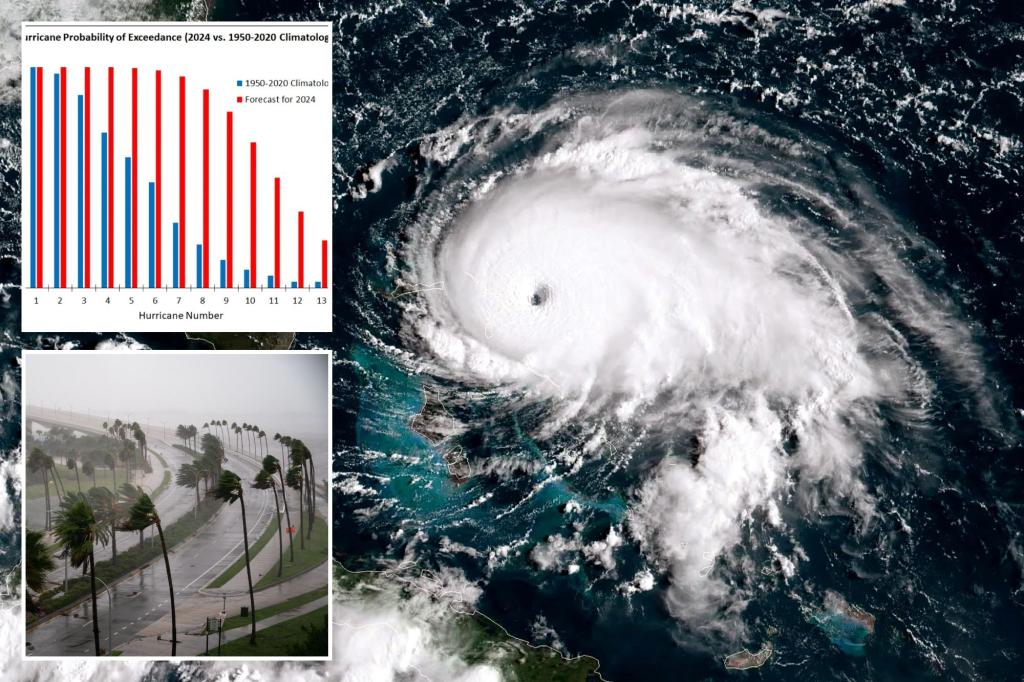Colorado State University’s initial forecast for the 2024 hurricane season predicts a potentially active period with around 23 named storms expected in the Atlantic basin, half of which are likely to become hurricanes. Dr. Phil Klotzbach and his team at CSU express more confidence in this year’s outlook due to favorable atmospheric conditions and signals. Within the report, specific states and regions are highlighted where the likelihood of a cyclone passing through is either above or below normal climatological odds. The chances of a major hurricane making landfall along the US coastline are estimated at 62%, with the Caribbean having the highest probability at 66%. In the Lower 48 states, CSU predicts that at least one cyclone will pass within 50 miles of Florida during the season, while New England has the lowest probability.
The chances of a cyclone impacting all coastal states are approximately 10-20% higher than the historical average, with Alabama experiencing the largest increase in probabilities. The researchers at CSU note that landfall probabilities are associated with the expected Accumulated Cyclone Energy (ACE) index, which is a measure of a tropical cyclone’s intensity and duration. Cyclones with longer durations and higher sustained wind speeds will have a higher ACE value. For the 2024 season, the Atlantic Ocean, Gulf of Mexico, and Caribbean are anticipated to produce an ACE value of 210, which is 170% of an average season’s production. The majority of the ACE is projected to occur west of 60°W longitude, where a significant portion of the population affected by tropical storms and hurricanes reside.
The influence of climate phenomena, such as El Niño and La Niña, plays a crucial role in the storm patterns and potential impact areas. Last year’s El Niño pattern steered storms away from the US and Caribbean, while this year’s La Niña pattern allows storms to come farther west, increasing the likelihood of affecting the Caribbean, Gulf, and Florida. Despite reduced or heightened probabilities, there is no guarantee or exclusion of a direct storm strike in a particular area. For instance, in 2023, the probability of a major storm impacting the Florida Panhandle was low at 28%, yet it was the only region in the country affected by a significant cyclone. It is emphasized that individuals living in hurricane-prone areas must stay vigilant and prepared, ensuring appropriate measures are taken to protect their homes and loved ones during the hurricane season.
Overall, the 2024 hurricane season outlook from Colorado State University signals a potentially active period with above-average storm and hurricane formation in the Atlantic basin. Favorable atmospheric conditions, climatic signals, and historical data indicate an increased likelihood of cyclones affecting coastal states and regions. The ACE index provides valuable insight into the intensity and duration of tropical cyclones, with the 2024 season expected to produce a high ACE value, particularly west of 60°W longitude. The influence of climate phenomena like El Niño and La Niña can alter storm patterns, potentially steering them towards or away from specific areas. While probabilities offer guidance on potential impact zones, it is essential for residents in hurricane-prone areas to remain prepared and alert throughout the season, as unpredictable factors can result in unexpected storm developments and strikes.


